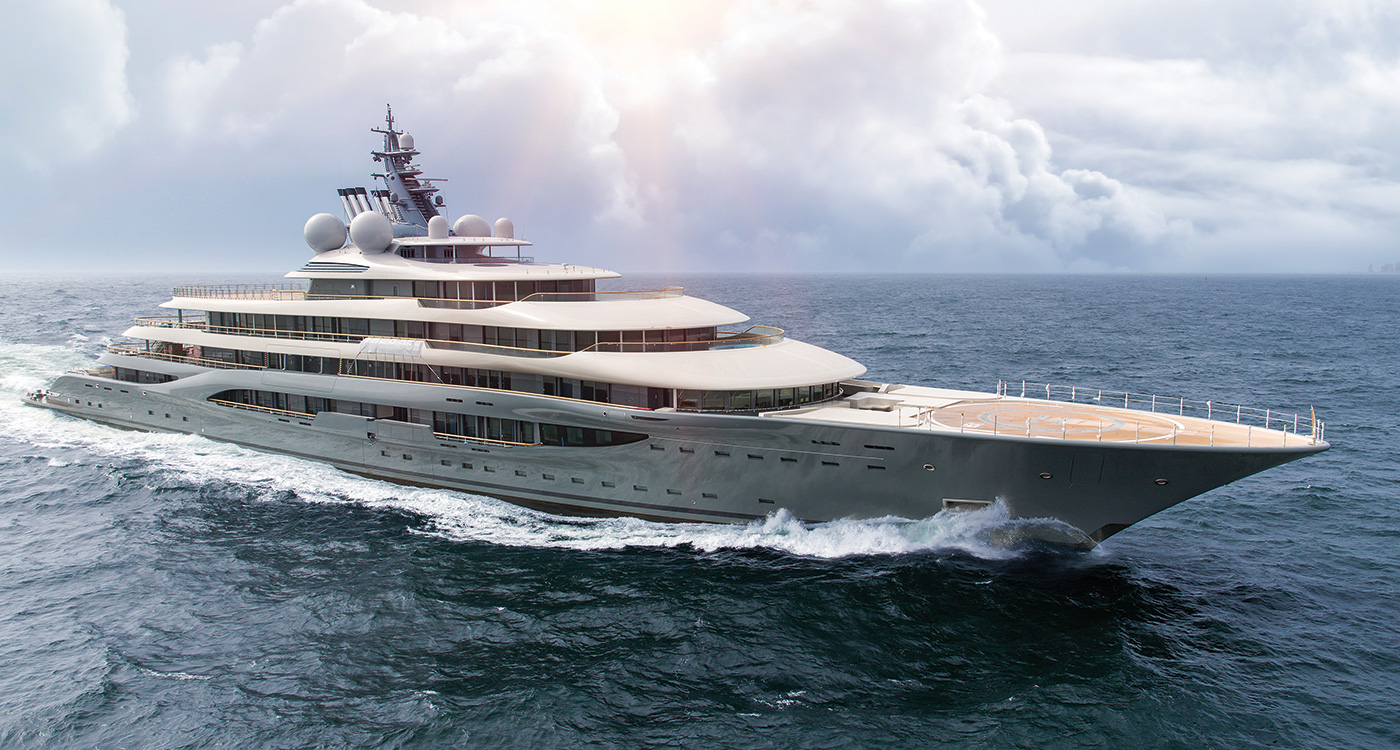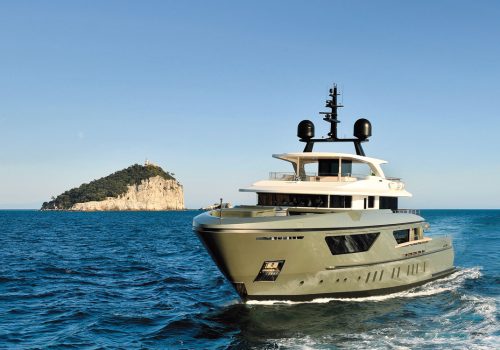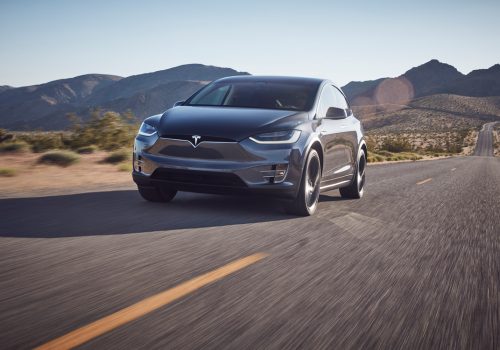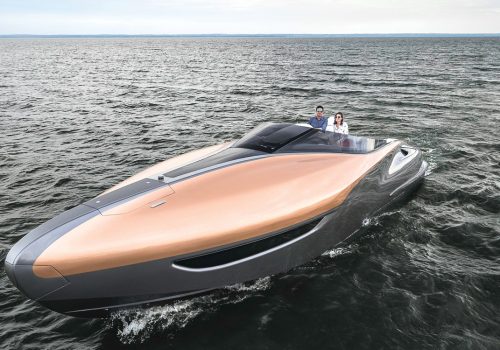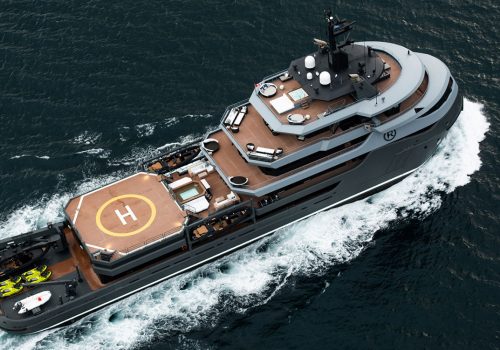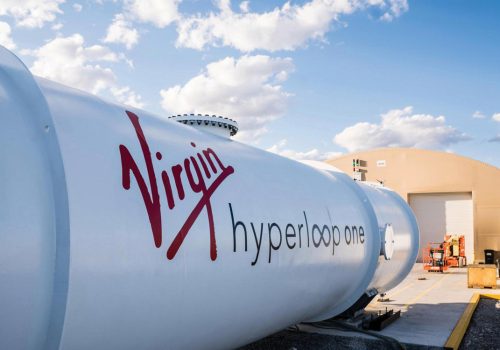“It’s important for owners to be aware that Lürssen is willing and able to take on any project.”
Lürssen doesn’t do catalogues, not does it have price lists or showrooms. Set up as a bespoke yacht builder, creating unique boats for individual clients, the only way to truly ‘get it’, is to visit their headquarters. So that’s exactly what we did.
They say money can’t buy you happiness, but it can buy you a yacht big enough to pull up right alongside it. Personally speaking, I could definitely subscribe to that way of thought, and if I’m to be totally honest, I have actually spent years thinking of exactly how my dreamboat would be. But that’s because, if you’re going to go big, then there’s only one way to do it and that’s with a fully custom build. Naturally, there are more affordable ways to be at sea, whether through semi-custom or even production yachts, but if it’s affordability you’re after then I might suggest you heed the wise words of Christie Hefner (the half-sister of Cooper Hefner, featured earlier in this issue), who once famously stated – “I’ve always believed that a goal in life is not to own a boat but have a friend with a boat.”

A guided tour around the shipyard in Bremen showed us see how Lürssen does everything in-house, even the scale models and that’s because they are loath to share any private information with outside parties.
But if your heart is still set on owning a superyacht, then there are few things to establish first, and I’m not talking budgets. Matters like how many people you plan to accommodate, how you plan to use your boat and where you plan to travel with it are all essential to the design process, as is getting the right designer onboard – excuse the pun. But the most important decision of all, in terms of bringing your dream to reality, will be the shipyard you hire.
Now, classical economics says that investors make decisions based on available information (to produce markets that price efficiently), so let’s go with that. Using simple arithmetic, we found that 16 of the 40 largest private yachts in the world were built by one single German shipyard – Lürssen. Moreover, the next most important shipyard in that elite segment is another German yard – Blohm+Voss, and Lürssen acquired them in 2016, so as a combined force, this group now represents a 50 per cent slice of the megayacht market.
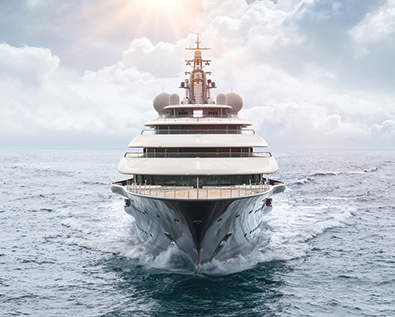
Measuring 136m in length, and with a beam of 20.5m, Project SHU (later named Flying Fox) was the largest yacht to be delivered in 2018.
Beyond the numbers, there’s something very special about Lürssen, and aptly enough I was recently invited out to Germany to visit the Lürssen shipyards of Rendsburg, Hamburg and Bremen, providing the perfect opportunity to discover what really makes them different. What I didn’t expect though, was their eagerness to show they’re far more than just a builder of 100-metre-plus megayachts. “We are perhaps victims of our own success,” explained Michael Breman, the company’s sales director, “and that has created a disconnect between the perception of what Lürssen does and what we are actually able and available to deliver. If you look at the data, you could say that yachts over 100 metres are an occasional business and that’s because in the last 15 years we have built 29 yachts between 58m and 90m, and just 15 that are larger than 90m. Yet it’s the longest [Azzam] and largest [Dilbar] that tend to get the headlines – we rarely get recognised for our smaller projects.”
It seems then that Lürssen wants the bulk of their business to be between 60 and 80 metres. This might well have something to do with the fact the market isn’t recovering as fast as hoped – apart from a spike in American sales, and a steady stream of business from the Middle East, the Superyacht Intelligence Agency states that orders from Europe have been feeble, and that includes Russia. Worse still, sale prices in the second-hand market remain incredibly depressed.
Yet for Lürssen, who maintains a third-third-third strategy of balancing orders between North America, the Middle East, and Russia plus Europe, things are pretty good. They currently have 12 projects in hand, and as far as I could tell from my ganders into their hangars, at least three of them are over 140 metres.
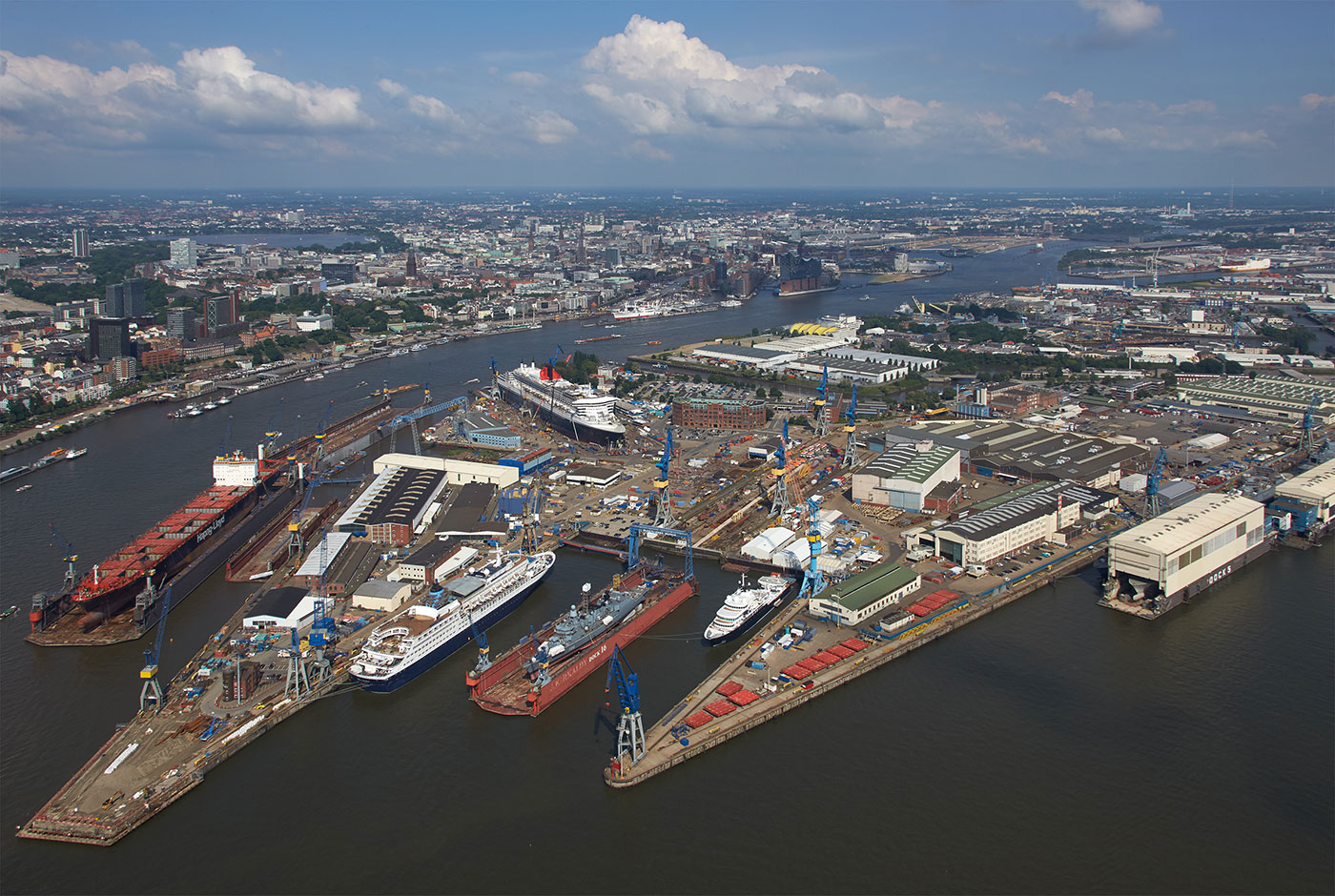
The size of Lürssen’s Blohm + Voss shipyard is awesome. Even the massive 112-metre Le Grand Bleu (which came in for some touch up works, including a full hull repaint and several cosmetic repairs) looks dwarfed by the other vessels around it, such as a military frigate, a cargo ship and two cruise liners, one of which is Cunard’s 345-metre Queen Mary 2.
When I asked Breman why it is so important that Lürssen keep a foothold in the smaller boats business, he revealed that customers’ tastes are changing, with a growing demand for a more intimate experience at sea (both in terms of people on board and proximity to the water). “The ultra wealthy client could just as easily buy a boat that is 60m as 100m. What we do is build bespoke creations that suit their needs, and it’s important for owners to be aware that Lürssen is willing and able to take on any project.”
Interestingly, the addition of Blohm+Voss has added another string to the Lürssen group’s bow. Not only do they now have eight shipyards, an incredible military ship building portfolio, and a custom-yachtmaking business that’s the envy of the industry, they’ve stopped B+V from commissioning any new builds and have reconfigured their yard to exclusively accommodate refits and renovations for cruise liners, cargo ships, and most importantly, superyachts, which now constitute a huge business with many owners preferring to do refurbs on their existing boats than trading up.

“When Lürssen bought Blohm+Voss it was like David taking on Goliath,” Breman told me, as we walked around Hamburg’s largest shipyard. “We had actually looked to acquire them in 2006. And in those ten intervening years we, as Lürssen, had managed to build 13 yachts and invested 68 million Euros back in our own business. B+V on the other hand had an ineffective sales approach, they hadn’t been able to reinvest a thing in the business, and the company was on the brink of bankruptcy.” So after convincing the German government that there wasn’t any antitrust issue when it came to their combined military contracts, they bought the company, introduced new systems and procedures, slimmed the workforce from 1,000 to 700 and concentrated activities on refits (they will, in principle, accept any boat from any builder). As a result, Blohm+Voss is now on the cusp of turning a profit for the first time in years.
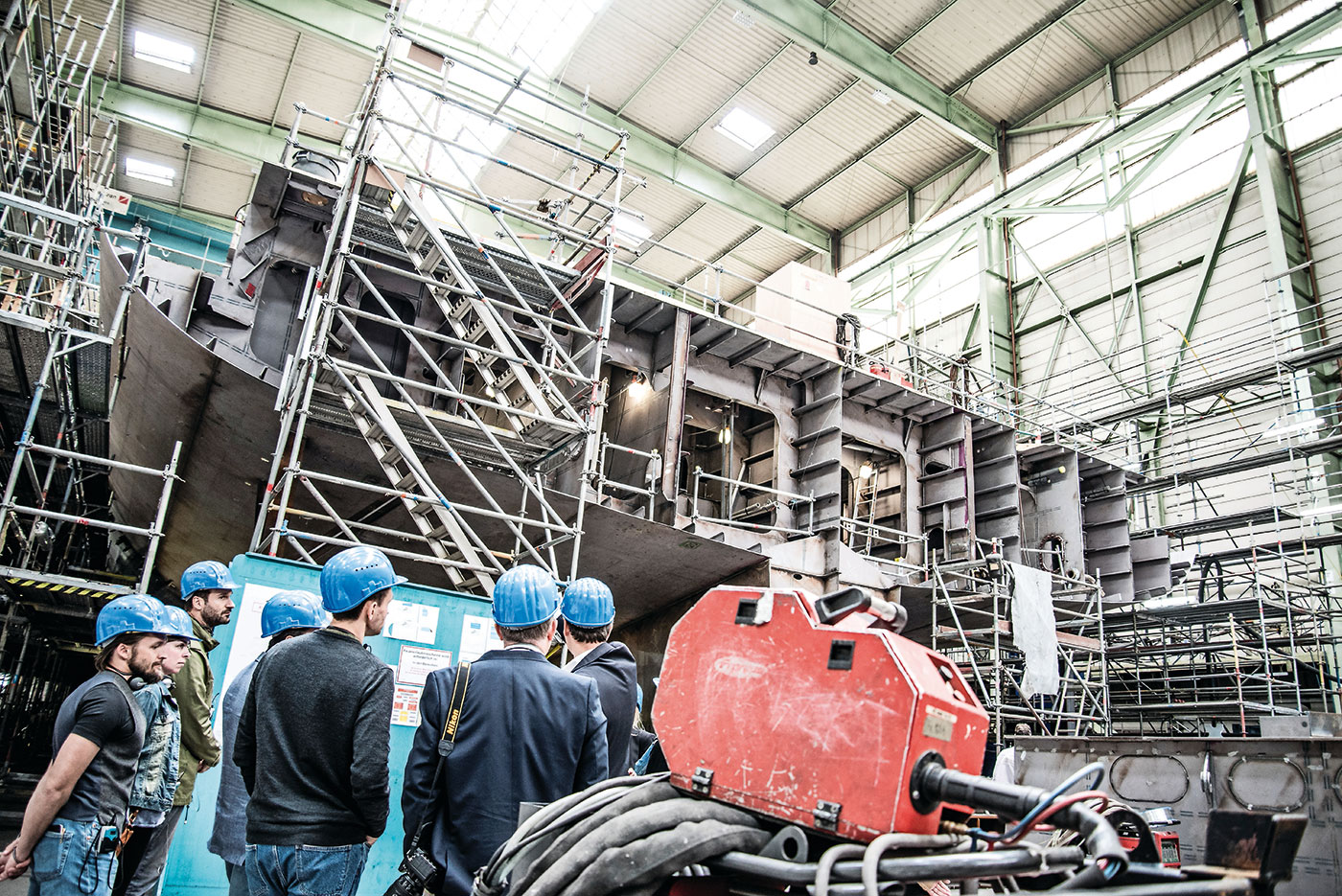
Despite the fact that Lürssen must have taken on some sizeable debt to acquire the B+V behemoth, the group remains privately owned and run, and is currently headed up by Friedrich Lürssen (Chairman) and his cousin Peter (CEO). They are actually the fourth generation of Lürssens to manage the business since it was founded in 1875 and in those 143 years of business, they didn’t just build the world’s first ever motorboat (in collaboration with the engine manufacturer Gottlieb Daimler), they have produced 13,000 boats (almost all motorised), and have grown to the point that they now employ 2,700 people (400 in management, 600 engineers, 1,500 skilled workers and 200 trainees and apprentices) who produce 2.5 to 3.5 new superyachts a year.
Seeing how Lürssens come to life is fascinating and something I’d recommend everyone do, at least once. Each build starts with the delivery of sheet metal (typically steel for the hull and aluminium for the superstructure) – the company tries to keep as little stock on site as possible, meaning every night, delivery trucks line up with the metal shipments required for the following day’s work. Every piece is laser-cut on site and then welded until individual blocks are assembled. These blocks are then put together in a LEGO-like fashion until they’re able to fuse the two largest sections – one for the front and one for the rear. It’s also amazing to see the pride that workers have in even the most hidden details as they demonstrate how the electronic systems, plumbing, cabling (a 100m yacht apparently has 700km of cabling) and complex piping all come to life.
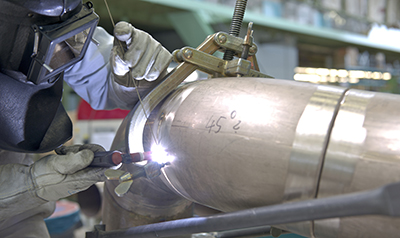
During our visit, I learnt how Lürssen has its own think tank and has, in the past, developed all sorts of proprietary solutions, including what is probably the world’s most complex exhaust system. “The chimneys narrow and widen, like with the aperture of a camera, according to the speed and flow to make sure the fumes shoot as high as possible and no one on board ever smells a thing.” They’re also now scrutinizing alternative propulsion systems, including hydrogen cells and LNG. “Small steps taken in a safe conservative way, that is the Lürssen way.”
While Breman admits the sky’s the limit when it comes to size, he affirms that bigger is not always better. “We are more focussed on finding more cost and time efficient ways to build smaller boats now. We build big boats but also small big boats,” presumably putting distance between Lürssen and their Dutch competitors, who are only now entering the megayacht space.
At the end of a visit that did a lot for my understanding of what Lürssen stands for, I allow myself one last cheeky question and ask Breman if he would say that a Lürssen is the best boat money can buy. “Our founders and company principles are rooted in the Hanseatic culture, and while there’s a good side to that, such as fiscal conservatism, the bad side is that we do not know how to blow our own trumpets – we won’t ever say we are the best, even if we are.” Clever. Either way, I think my dreamboat just became a Lürssen.
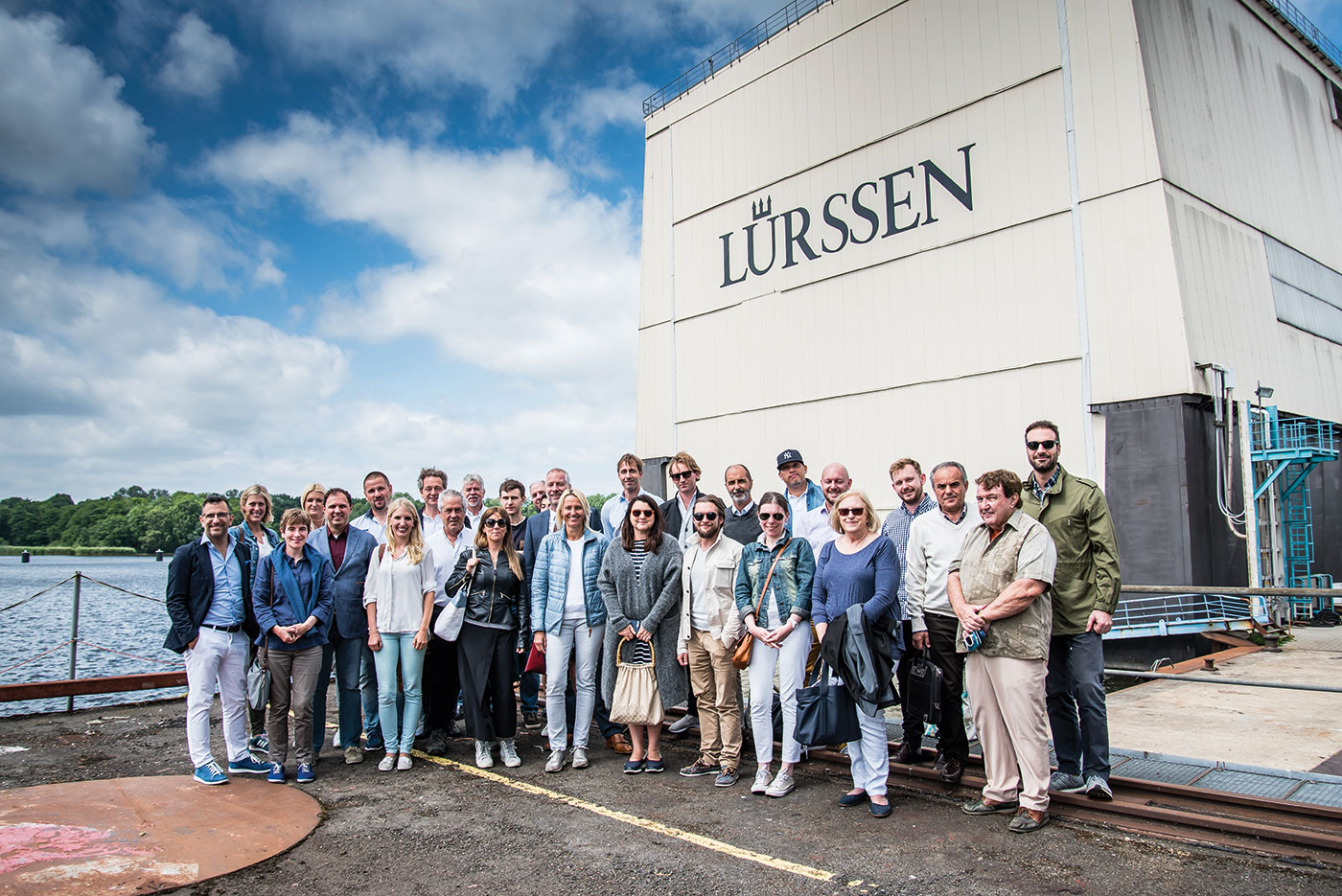
It has been over three years since Lürssen last invited the press to come and visit, but we were among the 20 lucky few this time around.


